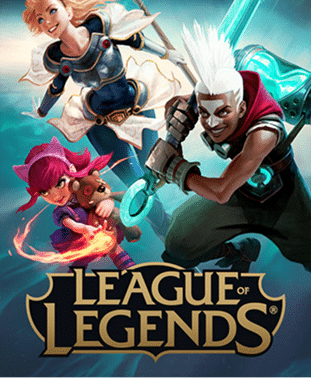How to Play Poker for Beginners – Poker Rules Explained
Matteo Farina, Senior Editor
Last Updated: 26/08/2025
Darragh Harbinson, Senior Editor
Fact-checker
Learning how to play poker can unlock a world of strategy, skill, and social fun. In 2025, it’s easier than ever to dive in. Whether you’re a beginner or just brushing up, this guide shows you how to play poker with confidence. Learn the basics – poker hands, betting rounds, and winning strategies – to boost your chances at the table. Packed with practical tips and insights, it’s your go-to resource for casual games or competitive play. Discover how to play poker and make every hand rewarding!
- Show full guideShow less
What is Poker?
Poker is a popular poker game that blends skill, strategy, and chance, played in both casual and competitive settings around the world. At its most basic, poker is a betting game where players compete to win a central pot by forming the best hand or persuading their opponents to fold.
Objective of the Game
The main goal in poker is to win the pot, which is the sum of all bets made during a hand. A player can win the pot in two ways:
- ✅ By having the best five-card hand at showdown (when remaining players reveal their cards), or
- ✅ By getting all other players to fold before the showdown through strategic betting and bluffing.
Poker isn’t just about the cards you hold – it’s about how you play them. Reading your opponents, calculating odds, and timing your moves are all crucial elements of success.
Common Poker Variants
There are many poker variants, each with its own rules and strategies. Some of the most widely played include:
- 🃏Texas Hold’em – The most popular form worldwide. Players receive two private cards (hole cards) and use five shared community cards to make the best five-card hand.
- 🃏Omaha – Similar to Texas Hold’em but with four hole cards and a requirement to use exactly two of them with three community cards.
- 🃏Seven-Card Stud – Players are dealt seven cards (some face-up, some face-down), with no community cards.
- 🃏Five-Card Draw – A classic variant where players can discard and replace cards in hopes of improving their hand.
For beginners, Texas Hold’em is often regarded as the most popular poker game and the best place to start. Its straightforward rules, widely available resources, and massive online presence make it the ideal variant for learning the fundamentals of poker.
Basic Poker Setup
Before jumping into a game of poker, it’s important to understand the basic rules, how the table is set up and how the game begins. A proper setup ensures smooth game-play and helps all players stay on the same page – whether you’re playing at home, in a casino, or at online casino sites.
Number of Players (2–10 per Table)
Poker can be played with as few as two players (called heads-up) or up to ten players at a full ring table. Most casual games and online formats seat 6 to 9 players, offering a balance of action and strategy. Fewer players usually mean faster game-play, while more players create larger pots and more complex dynamics.
Standard 52-Card Deck
Poker is played with a standard 52-card deck under table stakes —no jokers. The deck is shuffled thoroughly before each hand. All suits (hearts, diamonds, clubs, and spades) are equal in value, and hand rankings are based purely on card combinations, not suits.
Overview of Poker Chips and Betting Structure
Instead of playing with real cash directly on the table, poker uses a number of chips to represent money or points. Each chip color represents a specific value. For example:
- White = £1
- Red = £5
- Green = £25
- Black = £100
The basic poker rules and betting rules for the betting structure define how players can bet during the game. The three main types are:
- No-Limit: Players can bet any amount of their chips at any time (common in Texas Hold’em).
- Pot-Limit: Players can bet up to the size of the pot.
- Fixed-Limit: Betting and raising is restricted to specific amounts.
Understanding the chip values and betting structure is essential before joining any table.
Dealer Button and Blinds (Small Blind and Big Blind)
The dealer button is a round marker that moves clockwise around the table after each hand. It shows which player is in the dealer position for that hand—important because it determines the betting order.
To start the action, two players to the left of the dealer post forced bets called the small blind and the big blind:
- Small Blind: Posted by the player immediately left of the dealer
- Big Blind: Posted by the next player to the left, usually double the small blind
These forced bets create an initial pot and ensure there’s something to play for each hand. As the dealer button rotates, every player takes a turn posting the blinds.
Poker Hand Rankings (From Highest to Lowest)
One of the most important things to learn as a beginner in poker is how the hands are ranked. These hand rankings determine who wins at the end of a round when multiple players remain in play. Whether you’re playing Texas Hold’em or another variant, hand rankings are universal across all traditional poker games. Here’s a detailed explanation of each hand from the highest (best) to the lowest (weakest), including examples and their role in game-play.
Royal Flush
The royal flush is the best possible hand in poker. It consists of five consecutive cards from ten to ace, all of the same suit: 10, J, Q, K, A. For example, A♠ K♠ Q♠ J♠ 10♠. Because it is so rare, hitting a royal flush is considered the ultimate poker achievement. No hand can beat it.
Straight Flush
A straight flush is five cards in sequence, all in the same suit, but not specifically 10 to A. For example, 9♦ 8♦ 7♦ 6♦ 5♦. It’s the second-highest hand and only beaten by a royal flush. Among multiple straight flushes, the one with the highest top card wins.
Four of a Kind (Quads)
This hand consists of four cards of the same rank, such as J♣ J♠ J♦ J♥ 5♦. The fifth card is called the “kicker.” If two players have four of a kind, the higher-ranked set wins (e.g., four Kings beats four Queens).
Full House
A full house is a combination of three of a kind and a pair. For example, 8♠ 8♦ 8♣ 4♥ 4♠ is called “eights full of fours.” If two players have full houses, the one with the higher three of a kind wins, while tied players split the pot. If those are equal, the pair decides the winner.
Flush
A flush consists of any five cards of the same suit, not in sequence. For example, K♥ 10♥ 7♥ 6♥ 3♥. The highest card determines the winner if two players have flushes. If necessary, compare the next highest cards in descending order.
Straight
A straight is five consecutive cards of mixed suits. For example, 6♣ 5♦ 4♥ 3♠ 2♣. The ace can be used as either the highest card (A-K-Q-J-10) or the lowest (5-4-3-2-A), but not both at once. If two players have a straight, the one with the highest-ranking top card wins.
Three of a Kind (Trips or Set)
This hand includes three cards of the same rank and two unrelated cards. For example, 9♠ 9♦ 9♣ K♠ 6♦. If multiple players have three of a kind, the one with the higher-ranking triple wins. Kickers are used if needed.
Two Pair
This hand features two different pairs, along with a fifth unrelated card (the kicker). For instance, Q♦ Q♠ 4♣ 4♠ 7♠ is called “Queens and fours.” If two players have the same top pair, the second pair or kicker decides the winner.
One Pair
A pair is formed when you have two cards of the same rank and three other unrelated cards. Example: A♠ A♦ 8♣ 5♠ 2♣. If multiple players have the same pair, compare the kickers in descending order to determine the winner.
High Card
When no player has any of the above combinations, the hand is judged by the highest card alone. For example, A♣ 10♠ 7♦ 4♣ 2♠ is “Ace high.” If necessary, subsequent high cards are used to break the tie. High card hands are the weakest and most common in poker.
Quick Reference Table: Poker Hand Rankings
Rank Hand Name Description Example 1 Royal Flush A-K-Q-J-10 all same suit A♠ K♠ Q♠ J♠ 10♠ 2 Straight Flush 5 consecutive cards, same suit 9♦ 8♦ 7♦ 6♦ 5♦ 3 Four of a Kind Four cards of same rank J♣ J♠ J♦ J♥ 5♦ 4 Full House Three of a kind + one pair 8♠ 8♦ 8♣ 4♥ 4♠ 5 Flush Any 5 same-suit cards, not in sequence K♥ 10♥ 7♥ 6♥ 3♥ 6 Straight 5 consecutive cards, different suits 6♣ 5♦ 4♥ 3♠ 2♣ 7 Three of a Kind Three cards of same rank 9♠ 9♦ 9♣ K♠ 6♦ 8 Two Pair Two sets of pairs Q♦ Q♠ 4♣ 4♠ 7♠ 9 One Pair Two cards of same rank A♠ A♦ 8♣ 5♠ 2♣ 10 High Card None of the above; highest card wins A♣ 10♠ 7♦ 4♣ 2♠ Step-by-Step Game-play (Texas Hold’em Focus)
Texas Hold’em is a popular community card poker game that blends strategy, psychology, and chance. The objective is to form the best five-card poker hand using two private cards (hole cards) and five shared community cards. Here’s the basic texas hold’em rules and how a typical hand unfolds:
1. The Deal – Two Hole Cards to Each Player
Each player at the table is dealt two private cards face down, known as hole cards. Only the player can see their hole cards. These cards are the foundation of your hand, combined with community cards revealed later in the round.
- Example: Player A gets A♣ and 9♠; Player B gets Q♥ and Q♣.
2. First Betting Round (Pre-Flop)
After the hole cards are dealt, the first betting round begins, starting with the player to the left of the big blind. Players can:
- Call – match the current bet.
- Raise – increase the bet.
- Fold – discard their hand and exit the round.
This round is based solely on the strength of the two hole cards.
3. The Flop – Three Community Cards Dealt
Once the first betting round is complete, the dealer places three community cards face up on the table. This is known as the flop. These cards are shared by all players to combine with their hole cards and build the best five-card hand.
- Example Flop: 10♠ 7♣ 2♦
4. Second Betting Round
Players now evaluate how the flop has improved or weakened their hands. A new round of betting begins with the first active player to the dealer’s left. The same actions—check, call, raise, or fold—are available.
5. The Turn – Fourth Community Card
The dealer reveals a fourth community card, called the turn. Players now have more information and four community cards to work with.
- Example Turn: Q♦
- The board now reads: 10♠ 7♣ 2♦ Q♦
6. Third Betting Round
Another round of betting occurs after the final card is dealt , again starting with the first active player to the left of the dealer. Stakes may be higher at this stage, especially in no-limit games.
7. The River – Fifth and Final Community Card
The final community card, known as the river, is dealt face up. Players now see all five community cards.
- Example River: A♠
- Final board: 10♠ 7♣ 2♦ Q♦ A♠
8. Final Betting Round
This is the last chance for players to bet, bluff, or fold. Based on their hole cards and the five community cards, players decide whether to stay in the hand or back out.
9. The Showdown – Reveal Hands and Determine the Winner
If more than one player remains after the final betting round, it’s time for the showdown. All remaining players reveal their hole cards, and the dealer determines who has the best five-card hand.
- The player with the highest-ranking hand wins the pot.
- In case of a tie, the pot is split evenly between the winners.
Betting Options Explained
In poker, understanding your betting options is crucial for making strategic decisions throughout the hand. Whether you’re bluffing, protecting your hand, or calling a bet, knowing what each action means can make or break your success.
▶️ Check
To check means to pass the action to the next player without betting anything—but only if no bet has been made in the current round.
- You’re essentially saying, “I’m not betting, but I’m still in.”
- It’s often used when players want to see the next card for free or aren’t confident enough to bet yet.
Example: If you’re the first to act after the flop and no one has bet, you can check to see what the others do.
▶️ Bet
To bet is to place chips into the pot for the first time in a betting round.
- Once a player bets, others must call, raise, or fold.
- A strong bet can assert dominance or build the pot when you have a strong hand.
Example: If you hit top pair on the flop, you might bet to protect your hand and extract value.
▶️ Call
To call is to match the initial bet or current bet made by another player.
- You stay in the hand without raising the stakes.
- Calling is used when you believe your hand may be strong enough to win but aren’t confident enough to raise.
Example: Another player bets £20 and you call—this keeps you in the hand for that amount.
▶️ Raise
To raise means to increase the size of the current bet.
- It forces other players to match your raise or fold.
- Raising is an aggressive move that can build the pot or pressure opponents to fold.
Example: The pot is £50, and a player bets £10. You could raise to £30 or more depending on the betting structure.
▶️ Fold
To fold is to discard your hand and exit the round.
- You give up any chance of winning the current pot.
- Folding is the safest option when you believe your hand isn’t strong enough to compete.
Example: If someone raises big and you have a weak hand, folding prevents you from losing more chips.
▶️ All-In
To go all-in is to bet all of your remaining chips.
- You can’t bet or call more than you have.
- If you win, you’re eligible for the portion of the pot equal to your stake (others may continue betting for side pots).
Example: You have £100 left and decide to go all-in with a strong hand like pocket aces.
Betting Structures: Pot-Limit vs. No-Limit vs. Fixed-Limit
Poker games also differ based on the betting structure, which affects how much you can bet or raise:
Pot-Limit
- You can bet or raise any amount up to the current size of the pot.
- Common in games like Pot-Limit Omaha (PLO).
- Requires more calculation but allows big bets.
Example: If the pot is £100, your maximum raise is £100, making your total bet £200.
No-Limit
- There’s no cap on how much you can bet or raise—up to your entire chip stack.
- Used in most Texas Hold’em games.
- Offers high-risk, high-reward opportunities and dramatic showdowns.
Example: With a £50 pot, you can bet £5 or £500—whatever is in front of you.
Fixed-Limit
- Betting and raising amounts are set (e.g., £5/£10).
- In early rounds, bets and raises are £5; in later rounds, £10.
- Ideal for beginners due to lower variance and risk.
Example: In a £2/£4 fixed-limit game, you can only raise by £2 pre-flop and flop, and £4 on the turn and river.
In Summary:
Action What It Means Check Pass action without betting Bet Place chips into the pot for the first time Call Match the current bet Raise Increase the current bet Fold Discard your hand and exit the round All-in Bet all your remaining chips And in terms of structures:
Structure Max Bet or Raise Pot-Limit Up to the current size of the pot No-Limit Up to your total chip stack Fixed-Limit Limited to pre-defined increments Common Poker Rules to Know in 2025
Poker keeps evolving, especially on online poker sites and knowing the rules in 2025 is key for all players. While the core mechanics stay the same, such games with new game-play structures and betting formats bring added poker strategy and excitement. To succeed, it’s important to understand the updated rules for playing hands, placing bets, and determining winners. This guide offers a clear overview of the key rules to help you stay competitive and enjoy the modern game.
Time Limits for Online and Live Games
Time management has become an essential part of play online poker in 2025. For online poker, players must adhere to strict time limits for making decisions, often indicated by a countdown timer for each action. This ensures smooth game flow and prevents unnecessary delays. Live poker games, especially in tournaments, have also integrated clocks to limit decision times per round, enhancing fairness and maintaining the pace of play.
Use of Poker Software and Fair Play Regulations
The increased use of poker software has necessitated stringent fair play regulations. Many online platforms allow tools for tracking statistics and analysing game play, but players must ensure their software complies with platform policies. Unauthorised use of bots or real-time assistance tools (RTAs) is strictly prohibited and can lead to permanent bans. Regulatory bodies and platforms now employ advanced AI to detect fraudulent behaviour, promoting a fair gaming environment.
Tipping Etiquette in Live Poker Rooms
Proper tipping etiquette remains an important part of live poker culture. It’s customary to tip the dealer after winning a pot, especially for larger wins. The amount often varies by location or personal preference but generally ranges from a small percentage of the pot to a flat token amount. Being polite and tipping appropriately fosters positive relationships in live poker rooms and is considered good sportsmanship.
Mobile and VR Poker Trends
The advent of advanced technology has transformed how poker is played. Mobile poker apps dominate the online poker scene, offering convenience and accessibility to players worldwide. Additionally, VR poker has emerged as a cutting-edge trend, providing immersive experiences where players can interact in virtual environments resembling real-life poker rooms. These technological advancements continue to shape the future of poker, making it more dynamic and inclusive.
Poker Tips for Beginners
Whether you’re new to poker or looking to sharpen your skills, starting with the basics is essential. Here are some key tips to help beginners build a solid foundation and improve their game.
💡 Tip #1: Start with Low-Stakes Games
If you’re new to poker, it’s wise to begin with low-stakes games. This approach allows you to learn the fundamentals and gain experience without risking significant amounts of money. Starting small reduces pressure and helps you focus on improving your skills over time.
💡 Tip #2: Learn to Read Opponents
Understanding your opponents’ behaviour is key to success in poker. Pay close attention to their betting patterns, timing, and body language (if applicable). This can provide valuable insights into the strength of their hands and help you make smarter decisions.
💡Tip #3: Don’t Bluff Too Much
While bluffing is an exciting aspect of poker, overusing it can lead to predictable play and losses. Bluff sparingly and strategically, ensuring you’re considering the context of the hand, the table dynamics, and your opponents’ tendencies.
💡 Tip #4: Fold More Often Than You Think
One of the most challenging skills for beginners in draw poker s learning when to fold. It’s important to recognise that not every hand is worth playing. Folding often, especially in unfavourable situations, can help you conserve your chips and stay in the game longer.
💡 Tip #5: Bankroll Management Basics
Proper bankroll management is crucial for sustaining success in poker. Set aside a specific amount of money that you are comfortable losing and never exceed this limit. Avoid chasing losses and always stick to games with stakes appropriate for your bankroll. This discipline will protect you from potentially significant financial setbacks.
Common Mistakes to Avoid
Making mistakes is a natural part of learning poker, but some errors can significantly hinder your progress. By recognising and addressing these pitfalls early, you can improve your game-play and avoid costly missteps.
🚩 1. Playing Too Many Hands
One of the most frequent mistakes among poker players is playing too many starting hands. While it might be tempting to stay involved in every round, not all hands are worth playing. Being selective and folding weaker hands will improve your overall chances of success.
🚩 2. Chasing Losses
Chasing losses is a slippery slope that often leads to greater financial trouble. When you try to recover lost chips by playing aggressively or taking unnecessary risks, you stray away from sound strategy. Instead, focus on playing your best game and stick to your bankroll limits and gamble responsibly.
🚩 3. Ignoring Position
Position in poker is vital to making informed decisions while considering other poker rules , yet many players fail to consider this. Acting later in a hand provides valuable information about your opponents’ moves. Ignoring position can lead to poor decisions and losses, so always factor it into your strategy.
🚩 4. Being Too Predictable
Consistency in your game-play can be advantageous, but being too predictable makes it easier for opponents to read your moves. Vary your betting patterns and incorporate elements of deception to keep your opponents guessing. Unpredictability is key to staying ahead at the table.
Learning Resources and Tools
Enhancing your poker skills requires access to the right resources and tools. Here are some recommendations to improve your game in 2025:
✔️ Recommended Apps and Platforms
Platforms like PokerStars and GGPoker continue to be premier destinations for poker tournaments and online poker. These apps offer a wide range of games, tournaments, and opportunities to play against players of varying skill levels. Additionally, newer options like 888poker and partypoker provide excellent alternatives with their user-friendly interfaces and competitive features, making them great for those learning how to play poker.
✔️ YouTube Tutorials and Online Courses
YouTube remains a treasure trove of free poker knowledge, with channels like Run It Once and Doug Polk Poker offering insights into advanced strategies and concepts. For more structured learning, online courses on platforms like Upswing Poker and MasterClass provide in-depth lessons from professional players tailored to take your game-play to the next level.
✔️ Poker Hand Calculators and Training Sites
Leveraging poker hand calculators, such as Equilab or Flopzilla, can help you analyze different scenarios and improve decision-making. Training sites like PokerCoaching.com and Raise Your Edge offer interactive tools, quizzes, and personalised feedback to refine your skills effectively.
By integrating these resources into your study regime for stud poker, you can significantly enhance your knowledge base, adapt to new challenges, and keep evolving as a player.
Conclusion
Poker is a fascinating game that blends skill, strategy, and a bit of luck, making it a timeless activity enjoyed by millions worldwide. Its appeal lies in the endless opportunities for growth and learning, whether you’re playing casually or aiming to go pro. To truly master the game, consistent practice and thoughtful study are key. Tools like poker hand calculators and training sites can be incredibly helpful as you improve.
If you’re just starting out and want to learn how to play poker, focus on the fundamentals, take it slow, and, most importantly, enjoy the process. Poker isn’t just about winning – it’s about sharpening your skills, embracing the challenge, and connecting with others at the table.
FAQs
What are the basic poker rules every poker beginner should know?Basic poker rules involve understanding the hand rankings, turn order, and betting structure. At the poker table, players aim to form the highest-ranking hand or force others to fold. Most poker variants use similar structures—betting stages, a dealer button, and a showdown to reveal the winning hand. Whether you’re playing Omaha poker or Texas Hold’em, knowing these fundamentals is key for any poker beginner.How do cash games differ from other poker variations?Cash games are a form of poker where chips represent real money, and players can join or leave the table at any time. Unlike tournament-style card games, there’s no elimination, and blinds stay fixed. This makes cash games ideal for steady-paced learning and strategy development, especially for those exploring different poker variations like stud games or Omaha poker.What is a forced bet in poker and why is it important?A forced bet, such as the small blind bet or big blind, is used to initiate action in most poker variants. These bets ensure there’s money in the pot from the start and create strategic opportunities right from the first betting stage. In community card poker and stud games alike, the forced bet sets the tone for how aggressively or passively the hand will be played.How does community card poker work for beginners?In community card poker, like Texas Hold’em or Omaha poker, players share cards placed in the centre of the poker table. Each player uses a mix of their own hole cards and shared community cards to form the best five-card combination. After one final round of betting, the player with the winning hand—possibly a royal straight flush—claims the pot. It’s one of the most beginner-friendly poker variations.What should I know about draw poker when starting out?Draw poker is a classic form of poker where players are dealt a complete hand and then have the option to replace (or “draw”) some cards to improve it. After one final round of betting, the best hand wins. Unlike community card poker, all action takes place in private hands, making bluffing and hand reading crucial. It’s great for understanding card probability and comparing it with other games.How do I know which poker hand wins at showdown?The winning hand is determined by the official poker hand rankings, with a royal straight flush being the highest. At the showdown—after the final round—players reveal their hands. Whether in Omaha poker or other games, the player with the strongest five-card combination takes all the chips. Understanding hand strength is vital across all forms of poker and card games alike.Resources
Matteo Farina, Senior Editor
Matteo is a seasoned writer and editor with over a decade of experience. This, combined with his deep industry knowledge—ranging from casino reviews and game strategy to regulatory insights—makes him a trusted voice in the field. He offers insights in an engaging and reader-friendly manner, ensuring you get all the details you need to start your online gambling journey.
This article has been Fact-checked by Darragh Harbinson
We prioritize accuracy, objectivity, and depth in every piece of content we produce. Our rigorous editorial standards ensure that all information is carefully sourced and fact-checked. Each article is meticulously reviewed by experienced editors and leading technology professionals to maintain the highest level of credibility and relevance. This commitment guarantees our readers content they can trust and rely on.
From breaking news and in-depth match analysis to exclusive interviews and behind-the-scenes content, we bring you the stories that shape the esports scene.
40k+Monthly Visitors
100%User Satisfaction
10+Years experience
Popular Pages
Explore Categories
We use cookies to ensure that we give you the best experience on our website. If you're happy with this, feel free to browse the site as usual. Please check out our privacy policy for more info.








